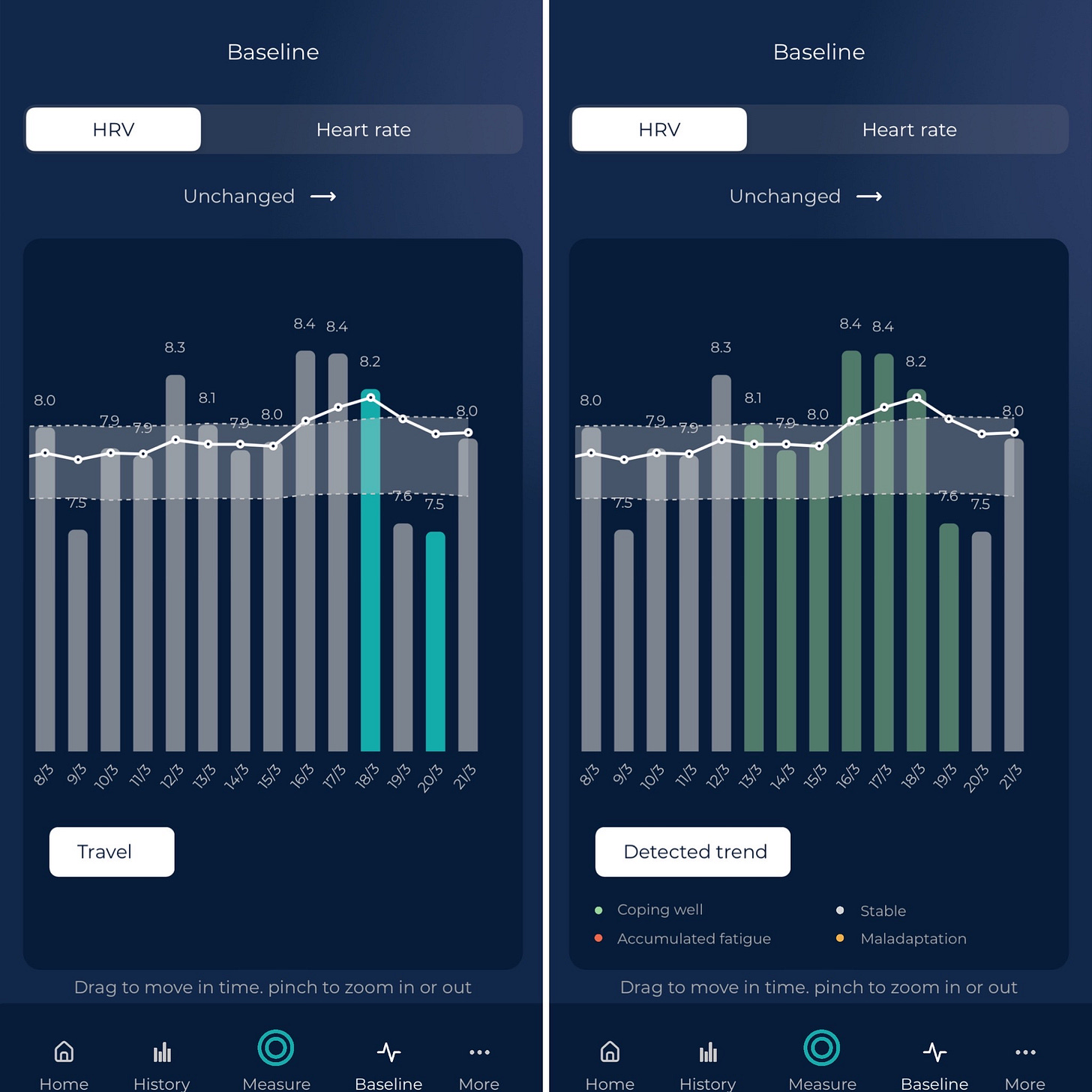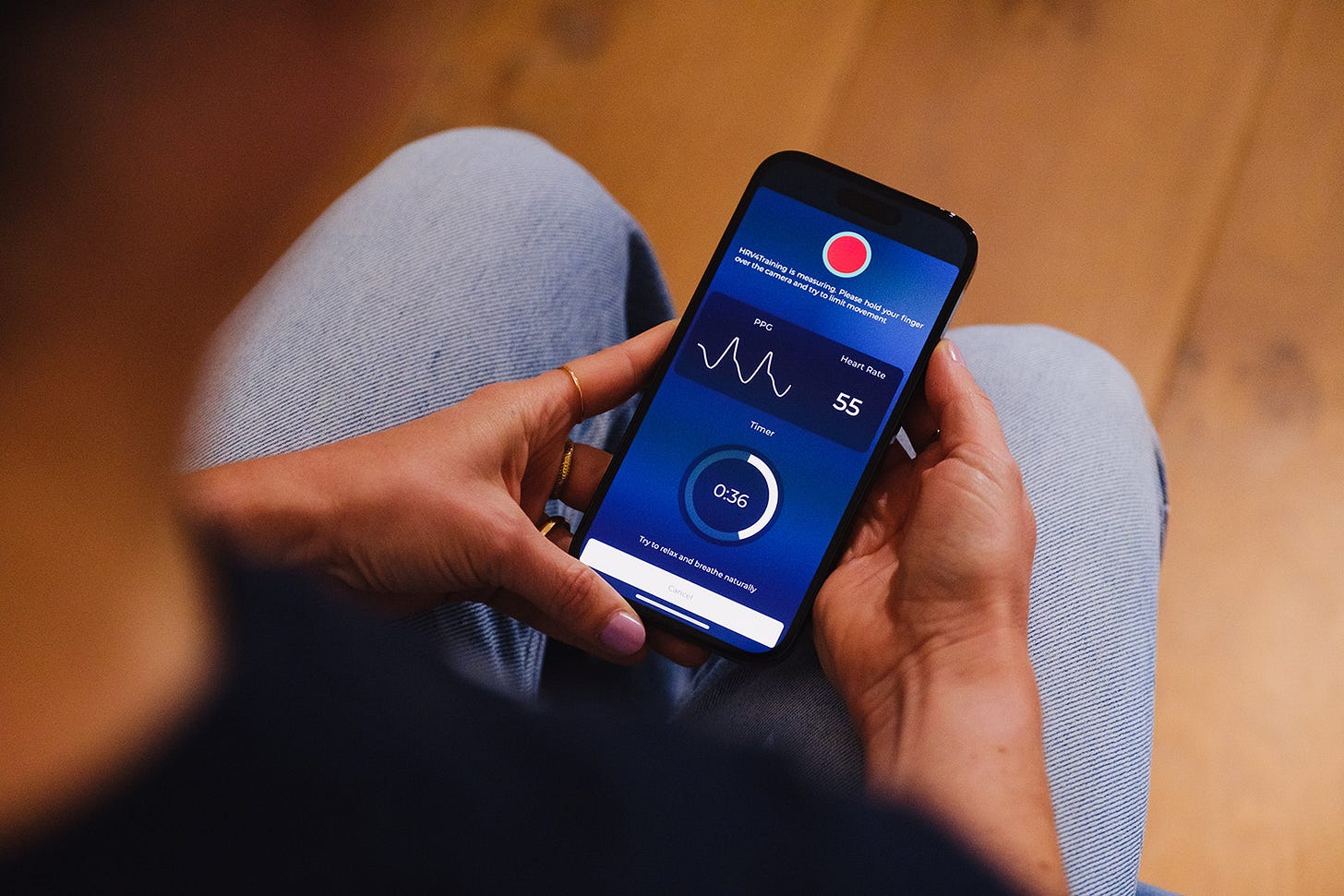hi there 👋
I hope everything is well.
Today we talk about HRV and performance, a poorly understood link.
HRV doesn't determine our ability to perform, which is why we can always do great workouts (or races) on a 'low HRV day'.
Anecdotes of this happening should be no surprise (especially for races, where disruption in our routine or psychological stressors often can lead to a 'more sympathetic response', without any issues in terms of performance). It is perfectly normal to race well or do a great session on a low HRV (another myth that should go).
The exception is probably when we are sick, as HRV is a global marker of stress, these situations would result in the same data (i.e. a suppressed HRV), with compromised performance (hopefully a rare case).
Racing is a 'rare event' and when we do so, typically we have already scheduled lower intensity / volume days before the race (taper) and after the race (recovery), hence you should really not worry about the data.
If you are curious to look at it (for example, I am), keep measuring, otherwise you can even skip it those days, as it will not anyways be used for actionability (you are racing regardless of what the data says). In HRV4Training, you can measure and hide the data, so that it won’t impact you psychologically on race day (see how, in the blog below).
Most of the year, we are not racing, but we are training and aiming for a certain physiological response. During this time, HRV can be useful.
As Andrew Flatt mentions here, it's really about load, and what we should or should not be doing. A low HRV might mean that we are in a situation in which we are not going to respond positively to the stimulus provided, and therefore we'd better time it differently.
Studies investigating this, e.g. having a group of people reducing training intensity when their daily or weekly HRV is below their normal range, have consistently shown either improvements in performance, or improvements in surrogates of performance (e.g. lab tests), or the same outcome (but with better individual responses), with respect to the group of people that continued with the programmed plan regardless of their physiology.
We all understand the basic principle intuitively: not only the type of stressors (e.g. type of workout) but also the timing (i.e. when we do it), matters.
Discount for Pro: 20% off 🖥️
HRV4Training Pro is the ultimate platform to help you analyze and interpret your physiological data, for individuals and teams.
You can find a guide here.
Try HRV4Training Pro for free at HRVTraining.web.app or use promo code SCIENCE for 20% off.
In the app, Pro brings the normal values view, which can help contextualizing longer-term changes, as well as rMSSD on the homepage, see an example below:

See you next week!
Marco holds a PhD cum laude in applied machine learning, a M.Sc. cum laude in computer science engineering, and a M.Sc. cum laude in human movement sciences and high-performance coaching.
He has published more than 50 papers and patents at the intersection between physiology, health, technology, and human performance.
He is co-founder of HRV4Training, advisor at Oura, guest lecturer at VU Amsterdam, and editor for IEEE Pervasive Computing Magazine. He loves running.
Social:
Twitter: @altini_marco.
Personal Substack.






Have definitely surprised myself with performance at training on low HRV days.
Never measure on race day! 🙈